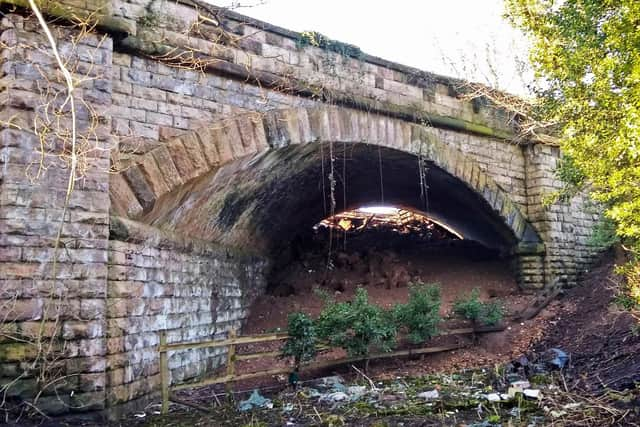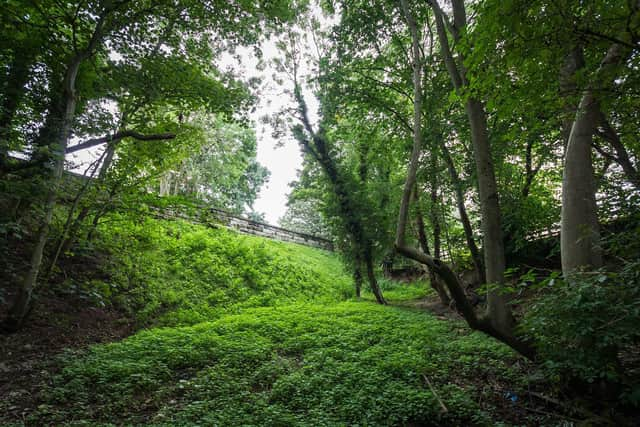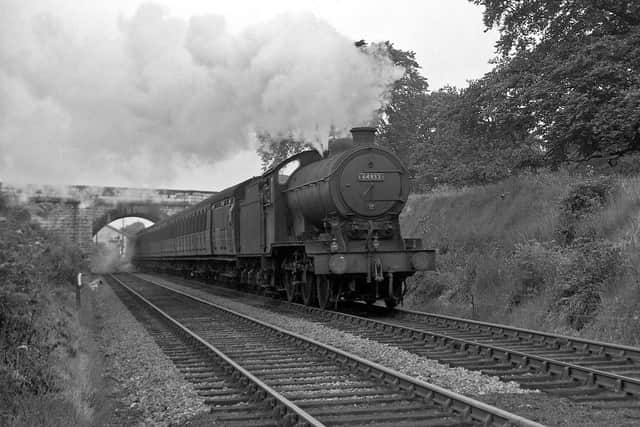Campaigners raise concerns over infilling of historic Yorkshire railway bridge they claim was in good condition
National Highways, which manages the historic railways estate for the government, have submitted a retrospective planning application to North Yorkshire Council for the work, which was completed in 2021, to be classed as legal.
The bridge in question, at Rudgate near Tadcaster, has a distinctive skewed arch and was built in 1847 for the Harrogate to Church Fenton line, which closed in the 1960s as part of the Beeching cuts. Although the track was lifted, the bridge structure survived.
Advertisement
Hide AdAdvertisement
Hide AdThe disused bridge was filled in as part of a programme to make similar structures safe in case their condition deteriorated.


National Highways claimed Rudgate Bridge presented a risk to public safety and it was infilled with concrete under emergency prevention development rights. However, they then neglected to apply for permanent consent, forcing Selby Council, which dealt with the original scheme, to take enforcement action.
The Historical Railways Estate Group claim an engineer’s assessment graded the bridge as being in ‘fair’ condition two years before the infilling.
Yet National Highways’ planning agent’s submissions state that the council was contacted in both 2020 and 2021 regarding the work, and raised no objections or comments until the request to complete a retrospective application was made.
Advertisement
Hide AdAdvertisement
Hide AdThey argue that the bridge has limited heritage value, is not listed, and that the remedial works allowed it to be used by all classes of road vehicle without weight restrictions.


HRE Group member Graeme Bickerdike said: “This is what happens when an organisation focused only on its own narrow interests is allowed to act without appropriate scrutiny.
“Rudgate was a historic and aesthetically attractive bridge, designed by an engineer who was at the forefront of the railway revolution in the 1840s - supposedly the first articled pupil of Robert Stephenson, with whom he worked on several Yorkshire railways. But National Highways shows no respect for such endeavours.
“Now, as it seeks approval for its actions, the company is misrepresenting its own engineering evidence. The bridge presented low levels of risk and should have been subject to sympathetic repairs as part of NH’s routine maintenance programme. We cannot keep losing historic assets to the destructive culture of some public bodies.”
Advertisement
Hide AdAdvertisement
Hide AdNational Highways head of historical railways estate Helene Rossiter said: “We are seeking retrospective planning consent to keep in place the strengthening work that we carried in out in 2021 and 2022 on Rudgate Road Bridge near Tadcaster. The work has enabled drivers to continue safely using the road over the bridge without restrictions. Before the work, the underside of the bridge had previously been partially infilled by others. This partial infill was unstable, making inspection unsafe, and the structure had failed a capacity assessment. We believe that retaining the infill at this location is the best option and in the public interest.”


They are also in discussion with the council about the accidental removal of two trees that were covered by a preservation order. Four other trees will also need to be felled following further investigations into their health, but six more will be planted to offset their loss.
The application is still under consideration.
